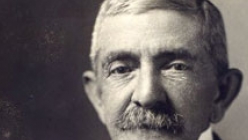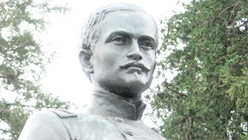History of American Cricket
Central Park and the Dream of New York Cricket
2017 May 20 by DreamCricket USA

By Tom Melville A great sport deserves a great home and, in America, most have found them. Augusta, Churchill Downs, Yankee Stadium.With the disbandment of the Staten Island Cricket Club in 1923 New York lost its last first class cricket ground, effectively leaving this great world sport to wander homeless and rootless, as it does to this day, in America's greatest city.
In mid-19th c. America cricket was a sport that was once on the cusp of greatness and when this coincided with plans by America's greatest city to establish the nation's finest leisure ground these two historical paths seemed destined to come together.
At least the nation's most prominent sporting journal of the time, the New York Clipper, saw it that way, letting out a "Hurrah!" on news that a designated cricket ground, to be eventually outfitted with its own pavilion, was in the final design plans of the city's new Central Park.
Anticipation quickly became an epiphany, the city's cricket community envisioning their Central Park home as the very omphalos of American cricket, the site of grand international matches that would spread and radiate the game's appeal and influence throughout the land.
The city's oldest and most influential club, the St. George, would play there. The students at the Free Academy (forerunner of CUNY) would play there. The students at Columbia College would play there. All New York cricket wanted to come .
But they did not build it.
This was the era when public parks were to be places of serene, but passive, being, not active becoming, where people came to grandly stroll, admire, and relax, but not do or act. And so the Central Park area originally earmarked for cricket would stand serene, beautiful, but totally unused for cricket or any other sport. In their wishes to give the people of New York nothing but peace and serenity, park commissioners had given them a peaceful and serene nothing.
Yet the New York cricket community would not give up so easily on its promised cricket patrimony and finally, in 1885, park commissioners relented, opening the North Meadow area to the city's smaller cricket clubs, the Riverside, Essex, Harlem, Nelson Lodge, who over the next decade made the park their center of operations...or at least tried to.
If the powers that be had given their consent for cricket in Central Park they had hardly given their ascent. The Central Park pitch was poor, almost treacherous, with Park Commissioners unwilling to do anything more than "cut the grass." A petition to build a clubhouse in 1889 was ignored, forcing one club, the Riverside, to improvise a clubhouse on an adjacent street
Central Park cricket, in short, had started small and remained small. Resident clubs continued to muddle along year after year as best they could on persistently substandard facilities. The Harlem club finally abandoned the park in 1897, and others probably soon followed until, by the turn of the century, we hear little more of cricket in Central Park.
By this time cricket in New York, and all around the country, was downsizing and the city's dream of a grand, world class, home for American cricket gave way to the new realities of low level weekend cricket matches in Prospect and Van Cortland parks.
With the disbandment of the Staten Island Cricket Club in 1923 New York lost its last first class cricket ground, effectively leaving this great world sport to wander homeless and rootless, as it does to this day, in America's greatest city.




